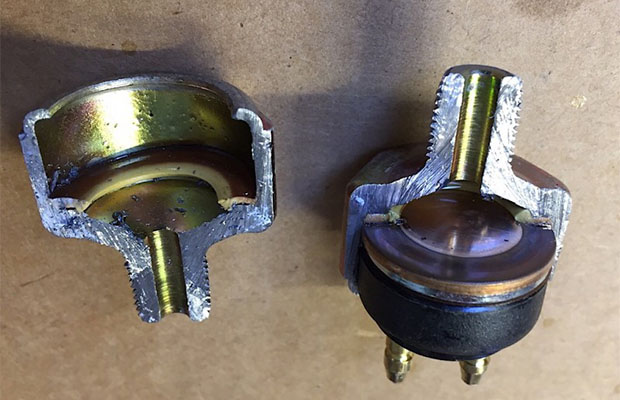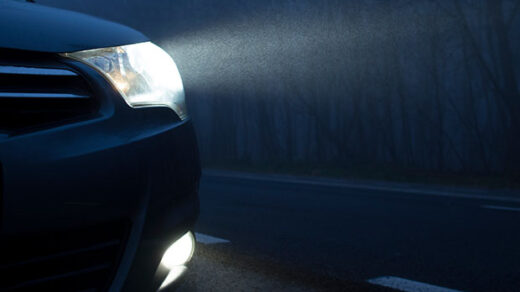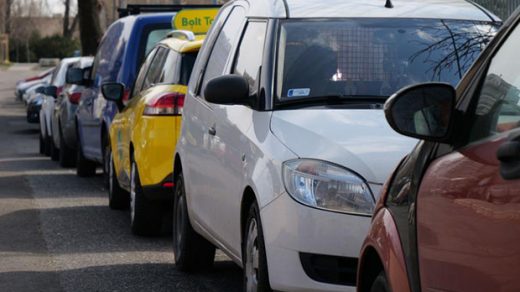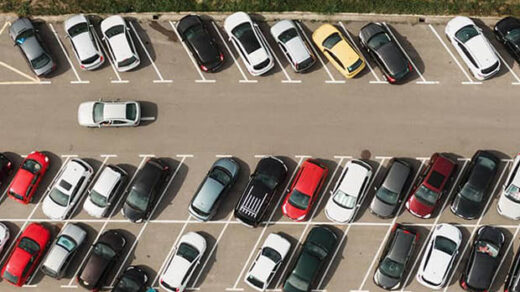You anticipate that you’ll turn the key and begin driving as soon as you get into your car. So, you may wonder why won’t my car shift out of park?
There are a few reasons why this may happen, ranging from a simple fix, such as pressing the brake pedal, to more complex reasons, such as transmission failure.
Fortunately, a minor mechanical issue is frequently to blame when a transmission gets stuck in park. Rarely do such problems necessitate major mechanical work or repairs. The underlying cause of this issue can be identified with a little foreknowledge and a few minutes of on-the-spot diagnostics.
Continue reading to find out why your transmission is stuck in park and what needs to be done to fix it.
Table of Contents
Potential Causes of a Stuck in Park Condition
The causes of a vehicle’s transmission failing to release from park position are as follows.
1. Incline Induced Pawl Pressure
A transmission’s parking pawl may experience extreme pressure when parked on a steep incline because it jams into the corresponding parking gear.
In this situation, a vehicle’s entire weight is being supported by the parking pawl and parking equipment. Drivers are frequently left stranded in the process because it is difficult to shift out of park as a result.
In this situation, releasing this pressure is necessary in order to successfully change into any drive gear. Often, a second person is needed to assist with this because they can rock the vehicle back and forth and generate enough movement to enable proper disengagement.
On steep inclines, however, this procedure might call for the use of a backup towing vehicle.
When attempting to stop on an incline and before putting your car in park, it is crucial to engage your parking brake in order to avoid such an incident. In contrast to the parking pawl and parking gear, the parking brake assemblies of a vehicle are given full weight in this situation.
2. Shifter Interlock
Engineers typically install a shifter interlock system in every vehicle to prevent a vehicle from being accidentally shifted into drive or reverse. This interlock prevents a shifter from being moved out of park until the brake pedal has been depressed on the car.
Interlock systems do, however, occasionally malfunction while they are engaged. Most manufacturers equip their cars with a shift lock release to prevent drivers from being stranded in such situations. In order to bypass the shifter interlock in their car, a driver can use this release.
By simply turning your key to the accessory position and putting the shifter in the neutral position, you can bypass the shifter interlock in some vehicles and start your car.
If this doesn’t work, one can access the manual shift lock override, which is typically activated by inserting a key or tiny flathead screwdriver.
One can check their owner’s manual for specifics, but the location of this manual override varies from vehicle to vehicle. Instead of having to look up these procedures when faced with a park-related issue, it is a good idea to become familiar with them now.
3. Brake Switch Failure
The brake pedal must be operational for the shifter interlock to operate as intended. The system can release the shifter by detecting when the brake pedal is depressed through the brake switch.
The interlock feature, however, might stop functioning if the switch malfunctions. It will carry on functioning as if you have not depressed the brake pedal.

Have a friend observe the brake lights as you press the pedal to identify the broken brake switch. You will need a multimeter for a complete diagnosis, but if the lights don’t turn on, the switch may be defective.
Thankfully, changing the brake switch is a straightforward task. The task can be completed without any specialized experience.
4. Transmission Failure
Rarely, a damaged component inside the transmission may be the reason why the transmission won’t shift out of Park. To properly check this, you’ll need some sophisticated diagnostic equipment and expertise.
In the majority of situations, you can fix these problems, like replacing a shifter solenoid, from the transmission oil pan, but occasionally you have to take the transmission out completely.
Read More: Why Is My Car Stuck In Park?
What Does Shifting into Park Mean?
Before we get into why you cannot shift out of “park,” it may help to know how the mechanism works in order to troubleshoot the problem more efficiently.
A parking pawl is referred to as the show’s star. By holding the output shaft, it effectively stops the car from rolling.
The parking pawl is extremely robust and frequently able to withstand the forces applied to the car.
However, if the car is parked on an incline or decline, it is much tougher to withstand, which requires the parking pawl to withstand an even greater amount of force.
This alone may be the reason you are unable to shift out of park, but more on that later in the article.
You may be aware that an automatic transmission is a highly complex piece of equipment with numerous moving parts.
Other mechanical or even electrical issues could be the cause of a shift out of park issue. We have you covered, so don’t worry!
What to Do When Car Won’t Shift Out of Park?
Below are some tips you can use when can not shift out of park.
1. Adjust the Weight
You may be able to forcefully release the parking pawl if the weight of your car prevents you from shifting out of park. Before attempting to force the shifter out of Park, press the brake pedal down firmly in case the car starts to move.
The transmission may make a loud noise as it engages if you complete this operation successfully. Another option is to ask a friend to assist you in gently rocking the car in the hopes that some of the weight will be released.
2. Look at Brake Lights
Have someone check the brake lights when you press the pedal down to see if the pressure is the cause of the issue. Checking the fuses is a good place to start when the lights aren’t working.
It’s time to investigate additional potential switch malfunctions if everything appears to be in order. You may need to turn off the car’s security system if one is present. Sadly, even if the brake lights are functioning, the brake switch itself may be faulty because it may be connected to two different circuits.
3. Override Shift Interlock Solenoid
You can disable the shift interlock solenoid in some vehicles. Check to see if there is a release by looking under the shifter cover. If you don’t see one there, you should look in the owner’s manual for the proper location.
It should be noted that this is a temporary solution. Even so, you should still have the problem fixed, particularly if the brake lights are malfunctioning.
4. See a Mechanic
You should have a technician take another look if none of these fixes the issue. You’ll also have to pay to have the car towed because you can’t drive it, which raises the cost of the repair. But as soon as the issue is fixed, leaving Park shouldn’t be a problem again.
Final Words
The parking pawl will be more resilient when parked on an incline or decline, as previously mentioned. As reason would dictate, the force acting on the pawl increases with increasing inclination.
The first thing you should pay attention to is where your car is parked, specifically if it is on an incline or flat surface.
There may be too much tension on the parking pawl if it is on an incline or decline, making it impossible to move from park.
If this is the case, it may help to apply the parking brake and firmly press the brake pedal, as that will relieve the tension on the pawl.
The transmission may be malfunctioning if you’ve recently noticed sluggish gear changes while driving or unusual behavior from the car’s RPM.
Read More: Why Is My Car Beeping When Parked?



